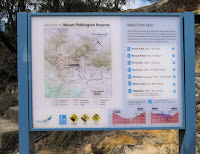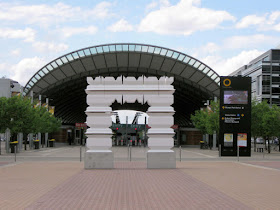 |
| Barry Wilde Bridge, Parramatta |
These three bridges near the city's centre, cross a short stretch of the Parramatta River above the Charles Street weir, 19Km upstream from Port Jackson.
The bridge in the photo above was named after a former mayor and state politician. The pathway in the foreground is part of the 'Riverside Walk' which leads from the ferry wharf to the 'Heritage Centre' next to Lennox bridge. Through art and interpretive signs it tells the aboriginal history of the area.
The Elizabeth Street footbridge is an award winning cycle and foot bridge which features an interesting public artwork .
'Wake' by Greg Stonehouse and Susan Milne was inspired by "the gliding movement of oars" and the "flight of birds".
Lennox bridge (below) was designed by the colony's first Superintendent of Bridges, David Lennox.
It has since been modified but was originally completed in 1839.
 |
| Lennox Bridge, Parramatta |
See also my 'RiverCat' and 'Parramatta Park' posts
Location map Additional photo of footbridge















































